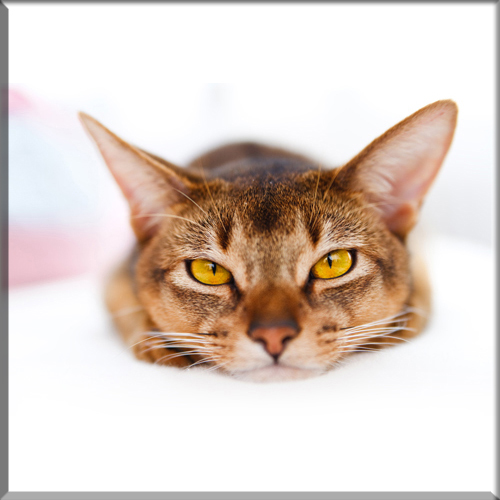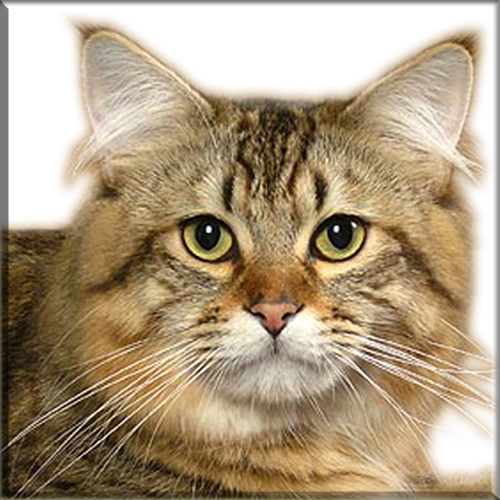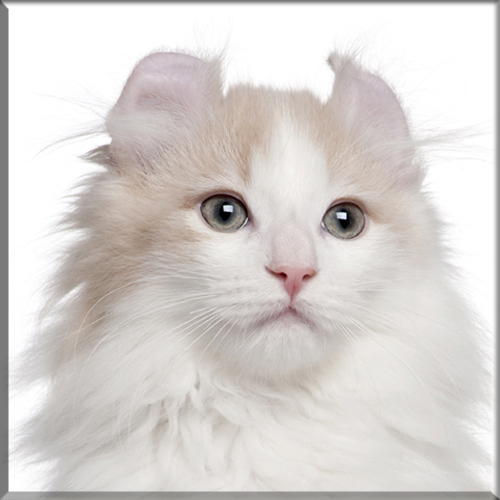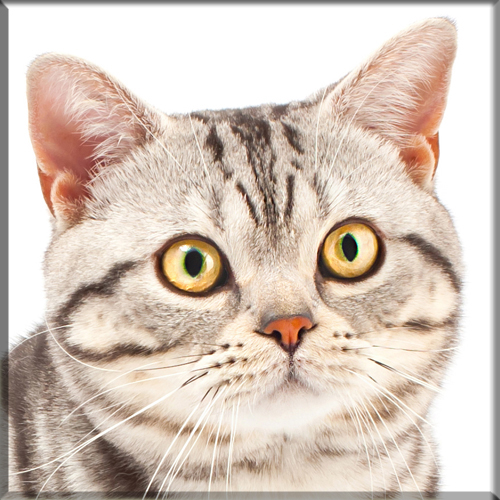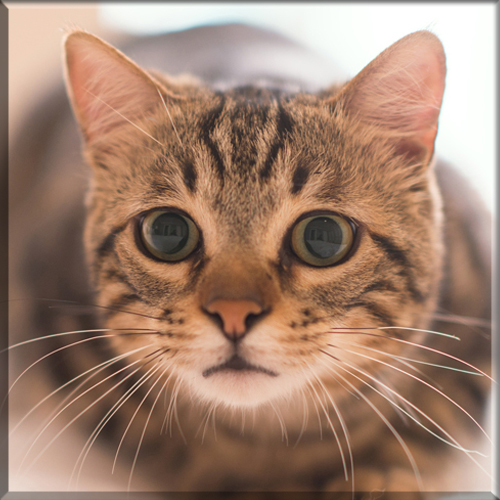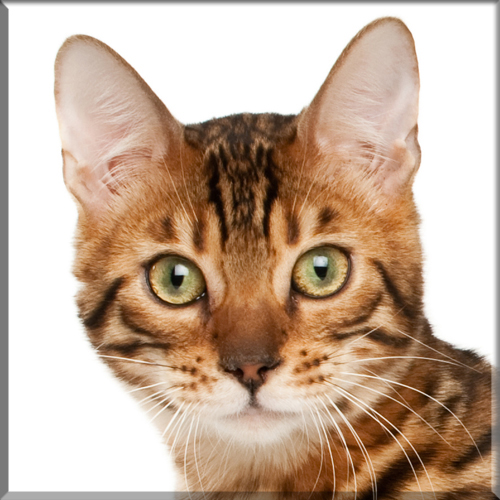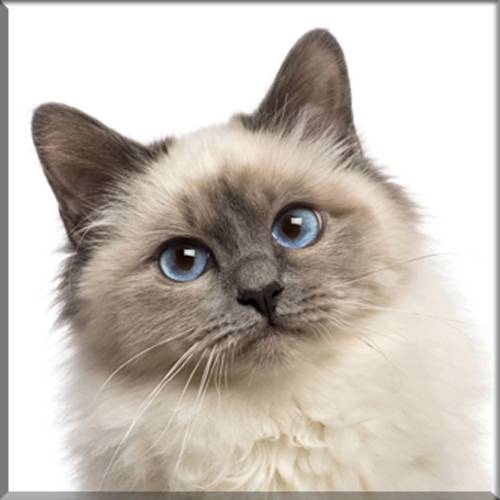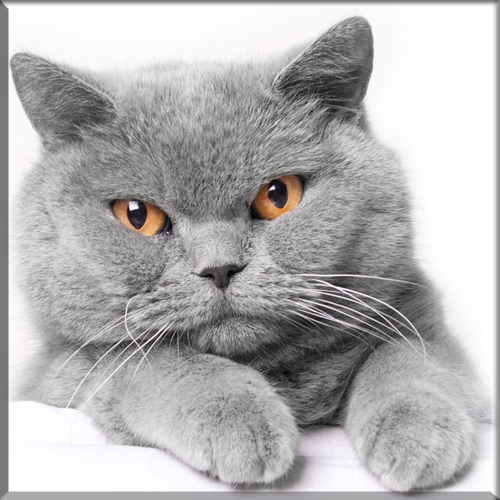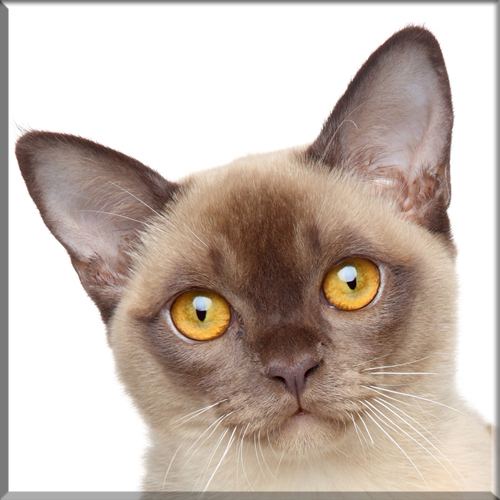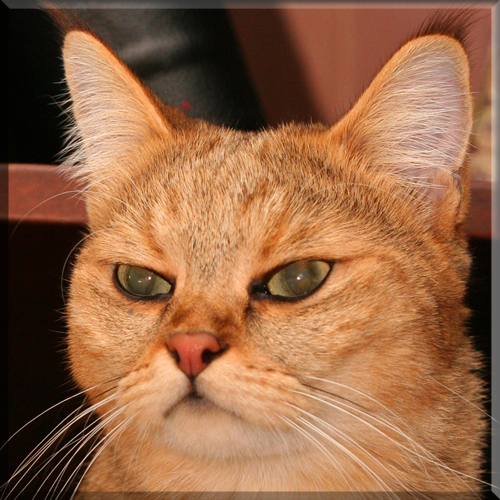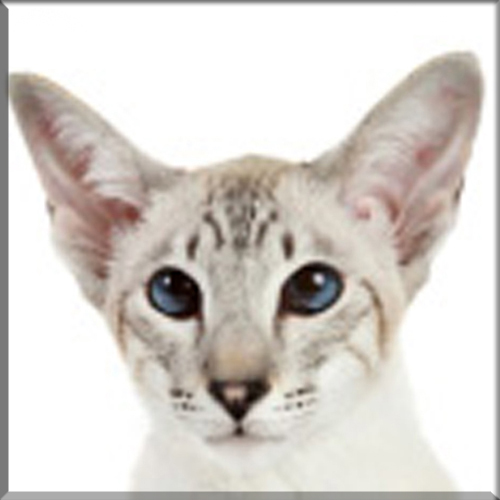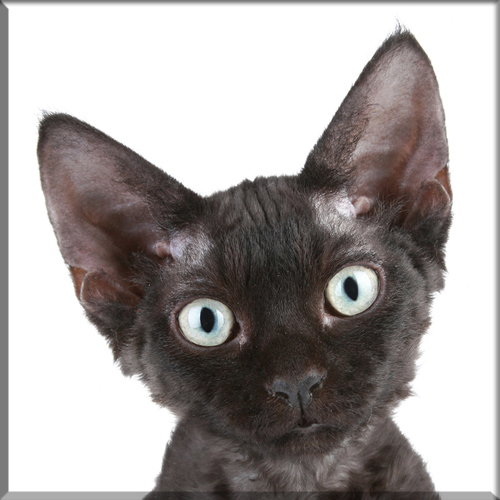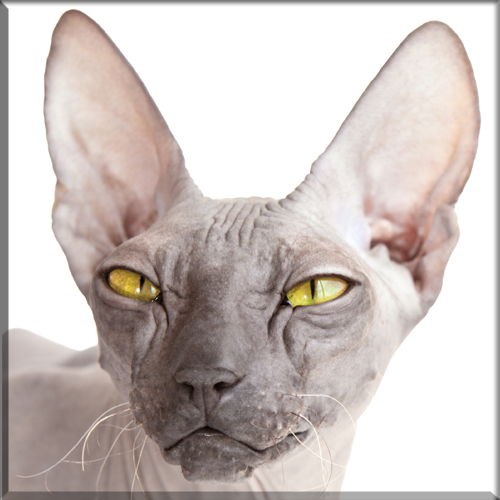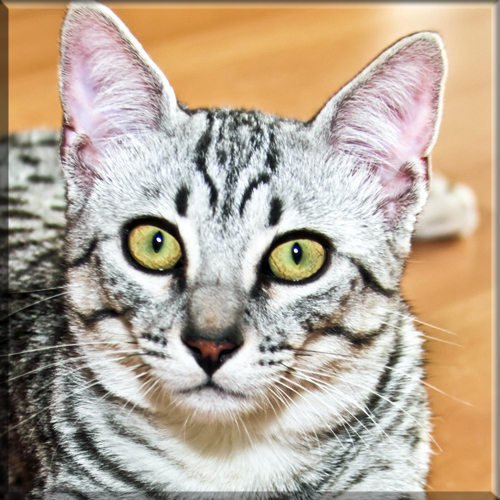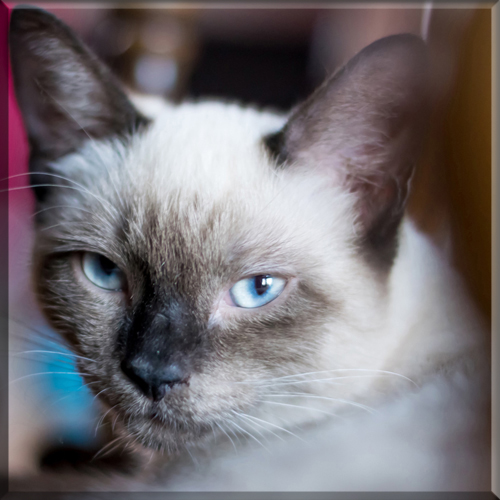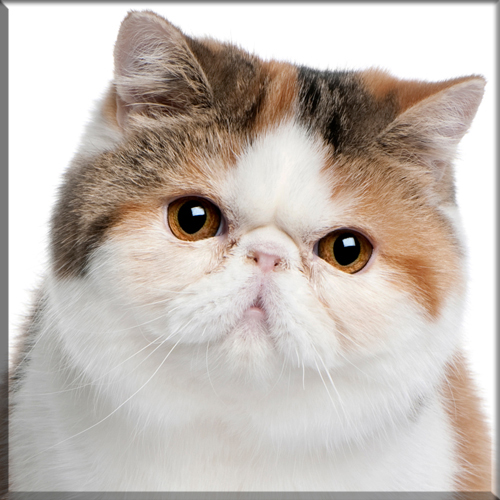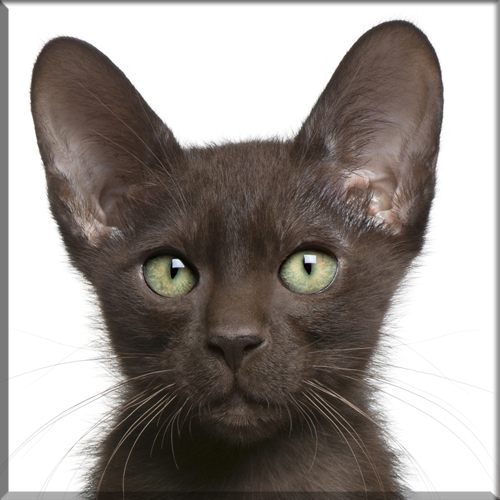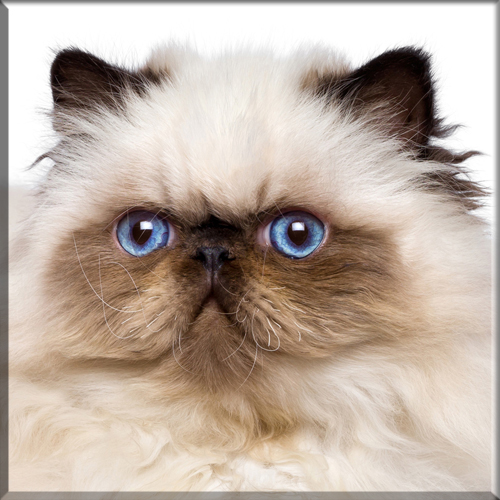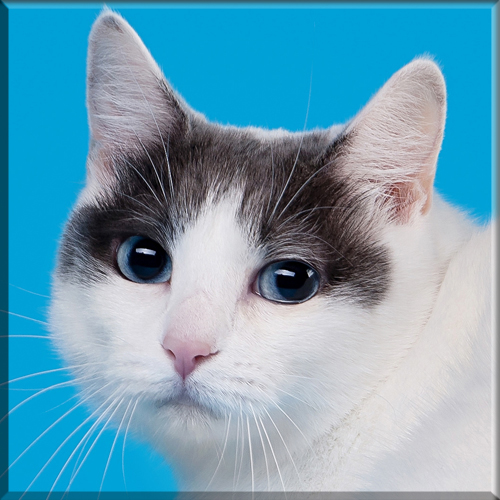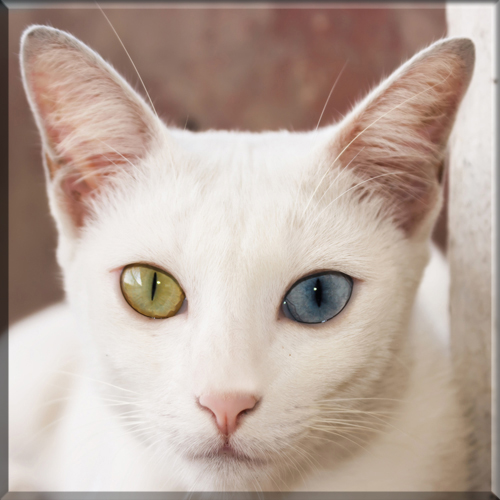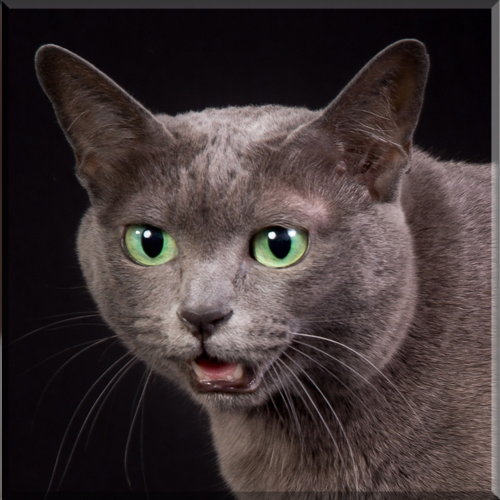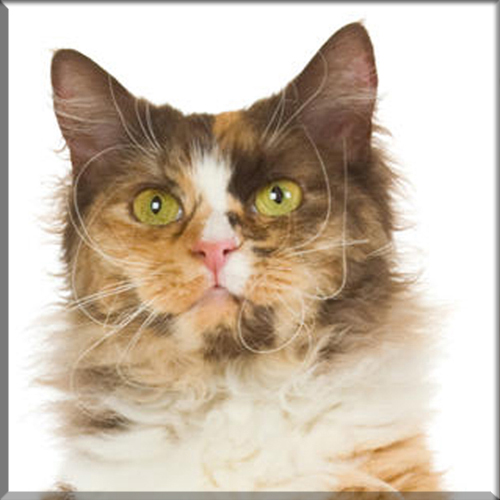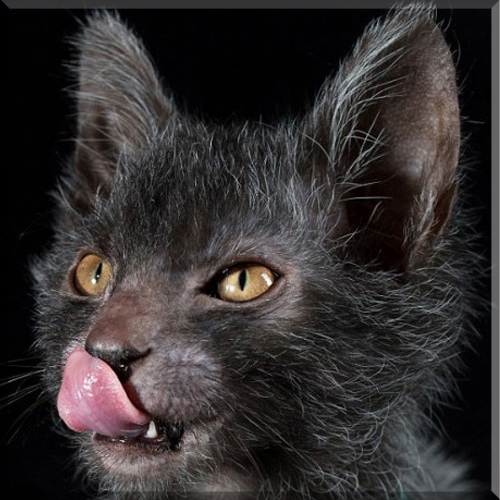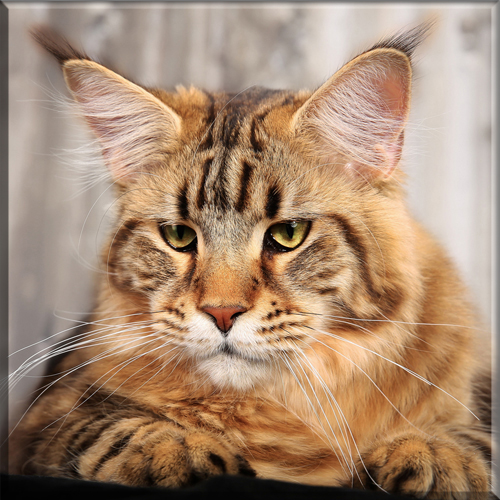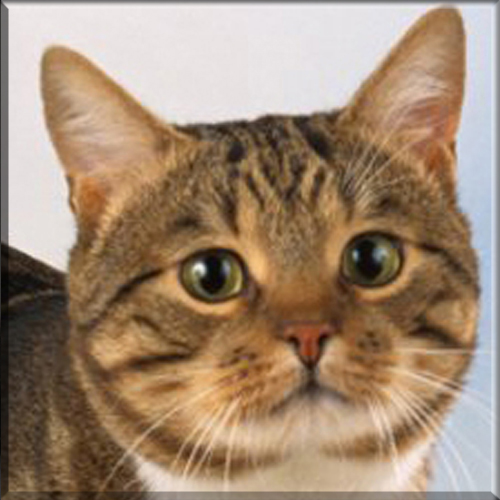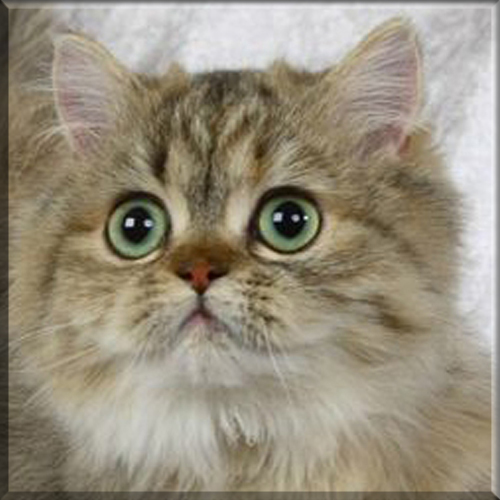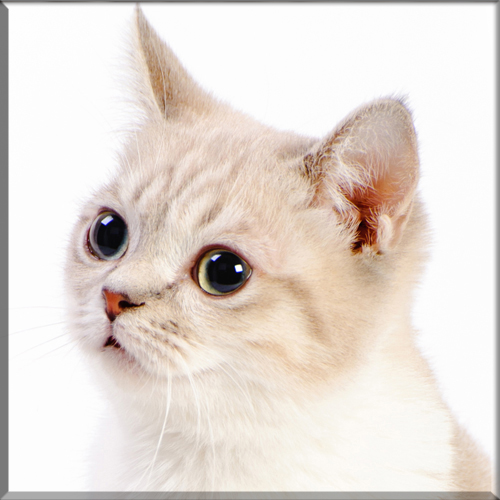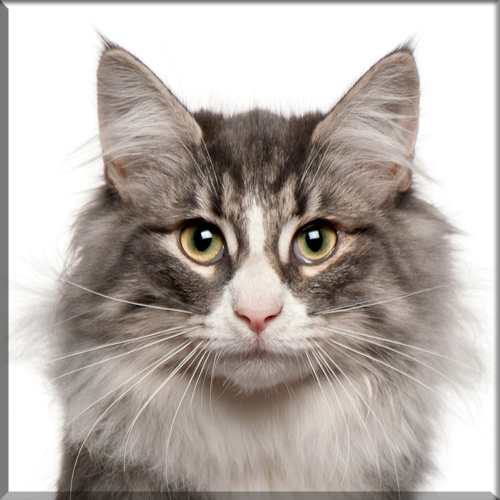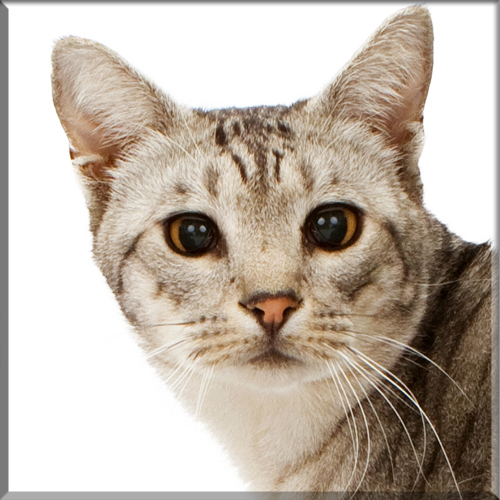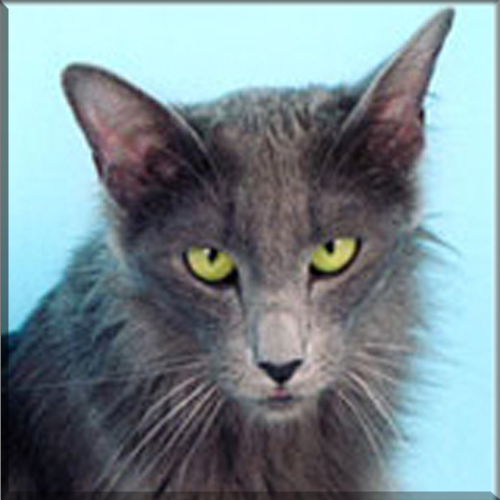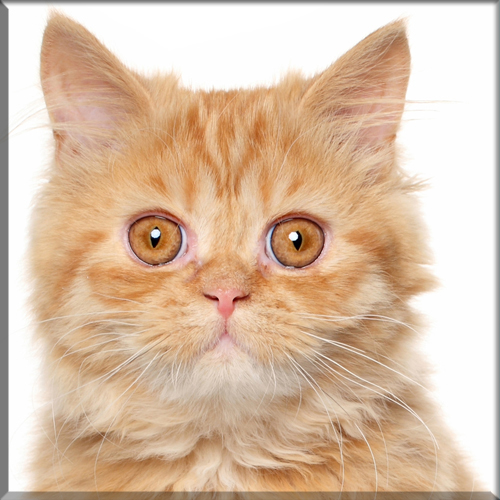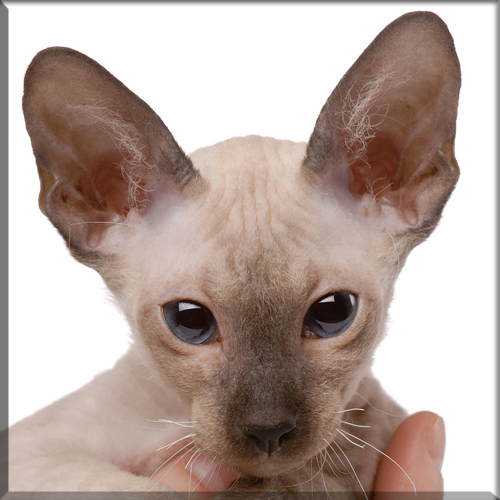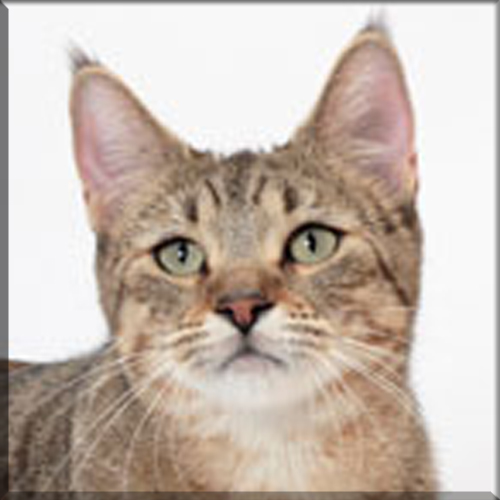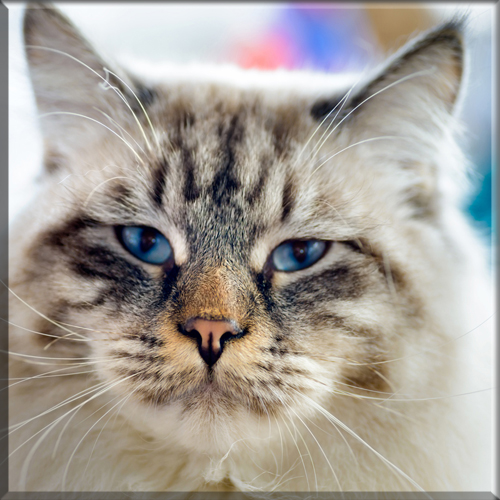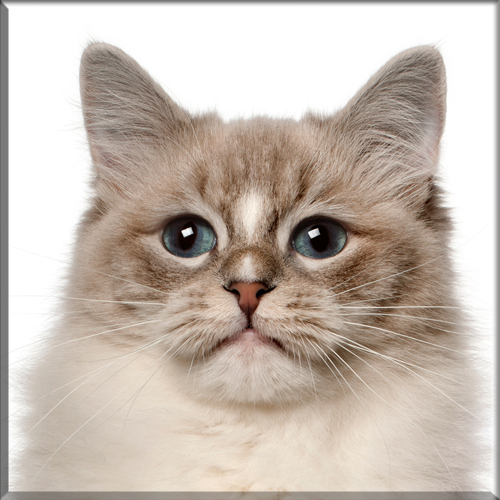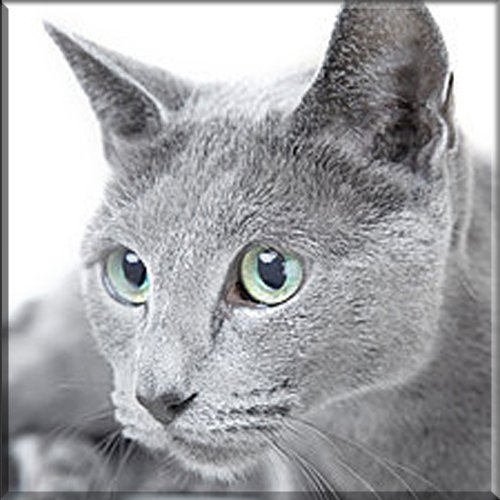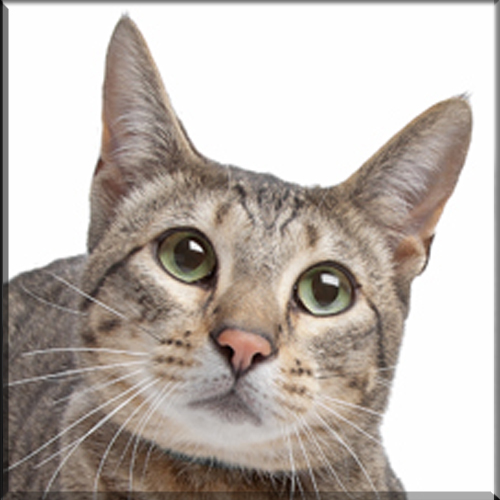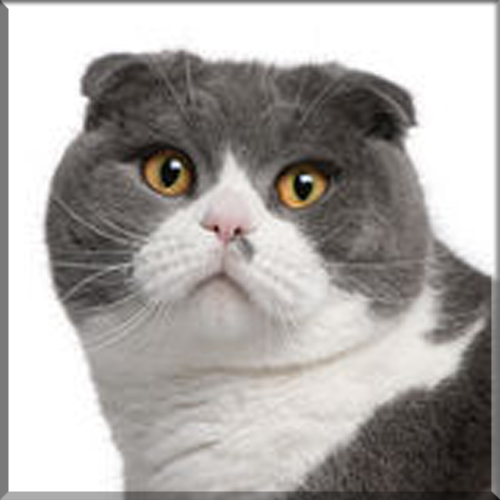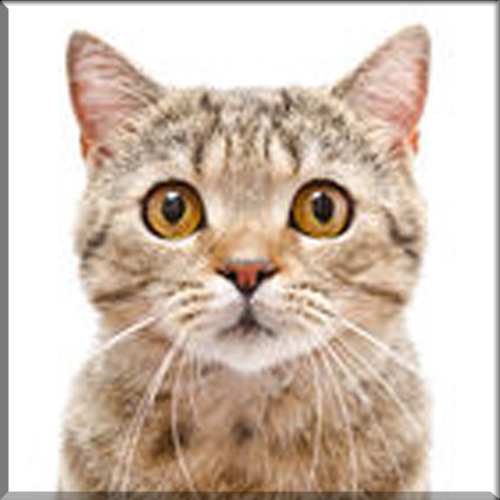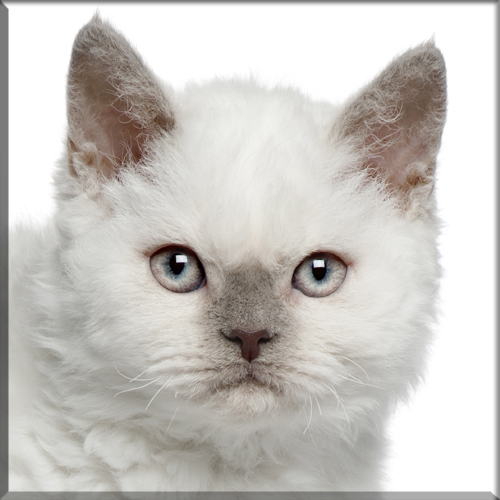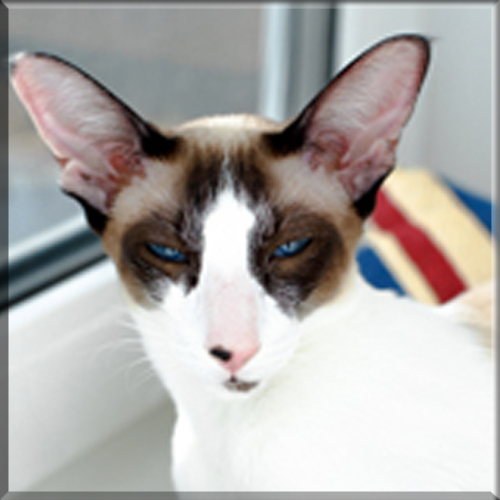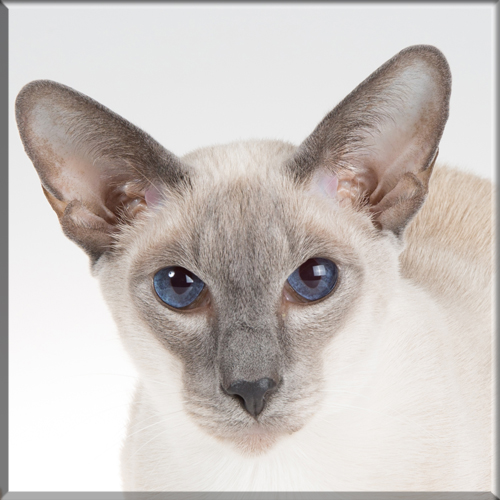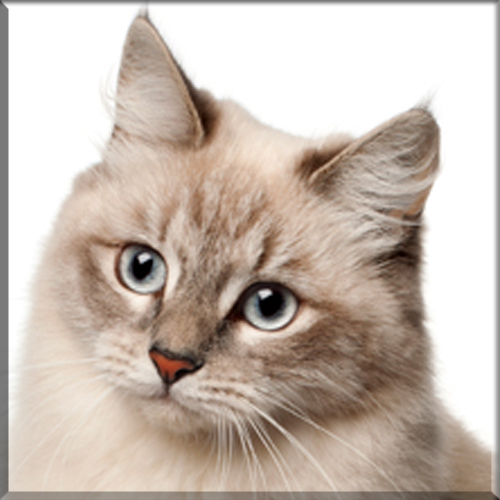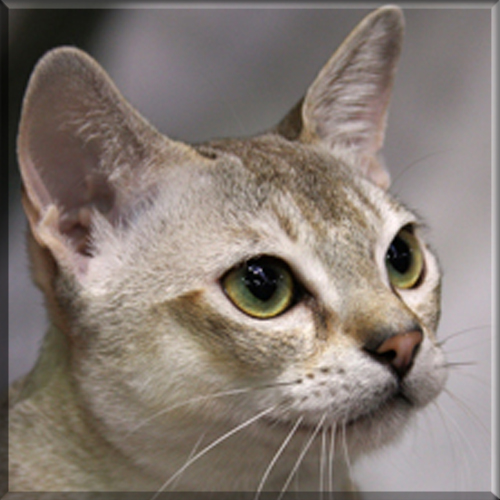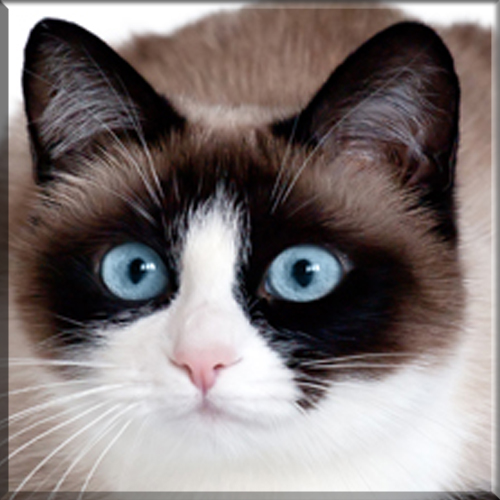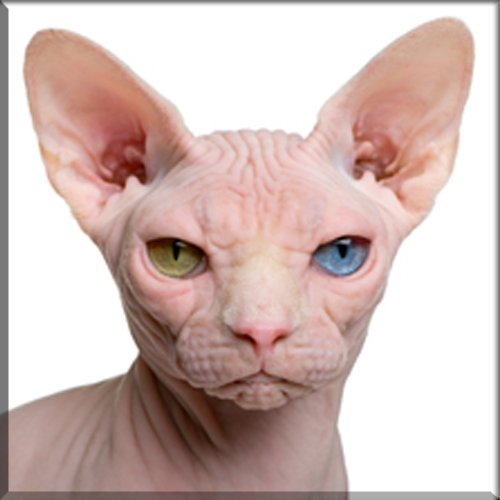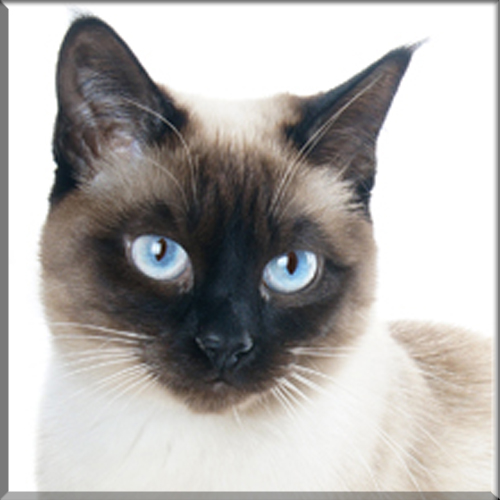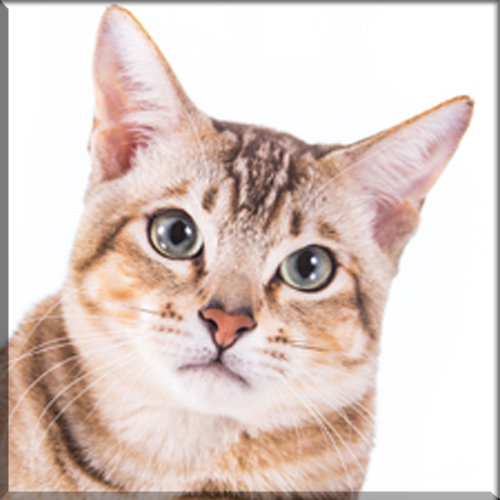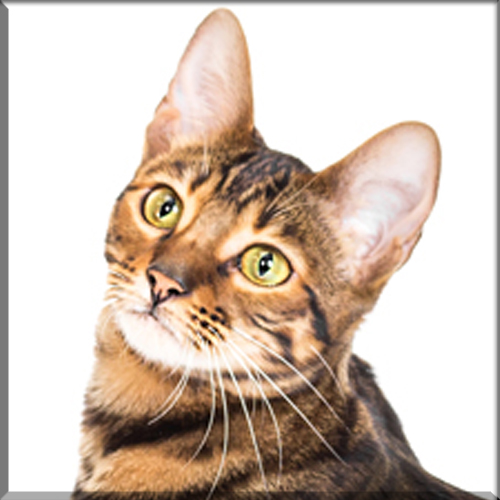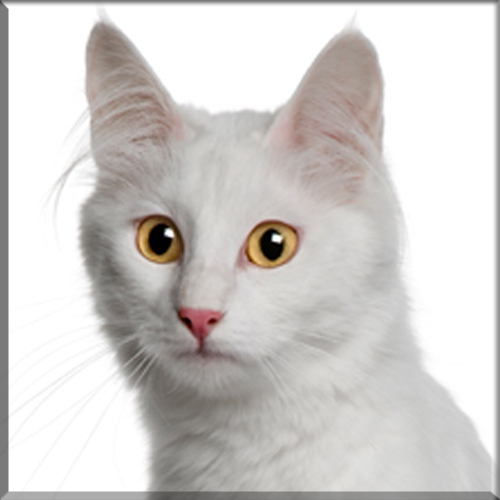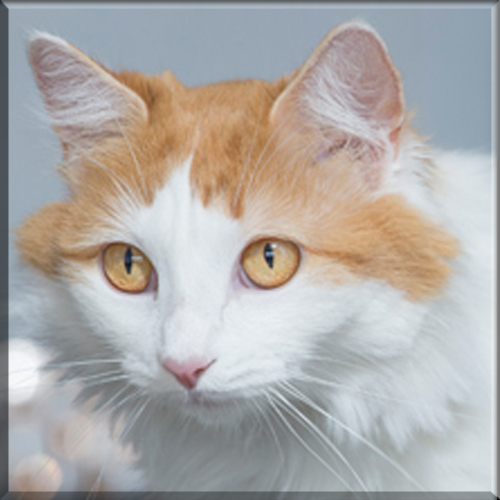Havana Brown
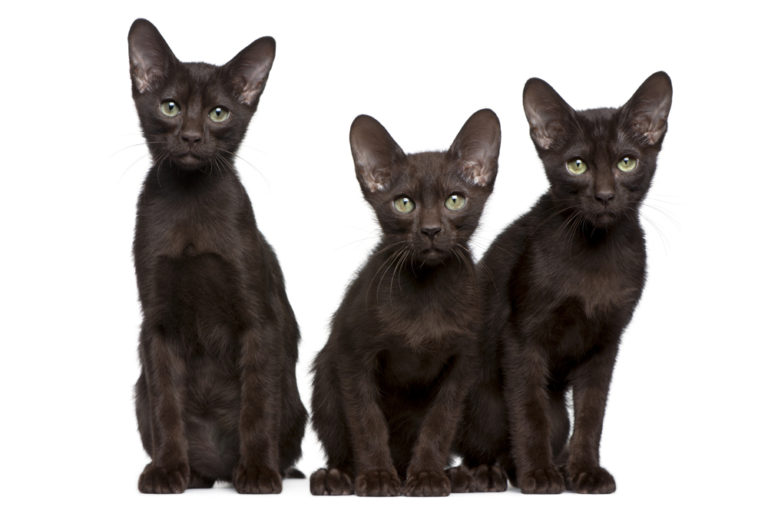
Appearance and features:
The Havana Brown is a well balanced, moderately sized, muscular short-haired cat with a body of average length. Sterilized animals can tend to become larger and somewhat chubby. They are a moderately active breed, compared to other short-hair cat breeds.
The coat color must be warm brown, typically reddish-brown, with no obvious tabby markings (note that kittens will always show markings but they resolve as the cat ages and dissolve completely by one year). Whiskers must also be brown and the eye color green. The head should be slightly longer than wide, but should never appear like a wedge. In profile, the nose/muzzle should have a distinct stop and change in direction at the eyes. Paw pads must be pink or rose colored but should never be black. Ears tend to be moderately large. A Havana Brown should have no extreme features; specimens should be attractive and moderate. Males tend to be larger than females and are average in weight compared with other breeds.
Size:
This is a medium-size cat weighing 6 to 10 pounds.
Family:
The Havana Brown was the result of a planned breeding between Siamese and domestic black cats, by a group of cat fanciers in England, in the 1950s. Early breeders introduced a Siamese type Russian Blue into their breeding. However, using current genetic testing, it is believed that almost none remain in the gene pool.
It has been documented that self-brown cats were shown in Europe in the 1890s, one name given to these was the Swiss Mountain Cat. These disappeared until post-World War II, with the most likely explanation that the Siamese Cat Club of Britain discouraged their breeding. The Swiss Mountain Cat was never used in the breeding programs of the modern Havana Brown. However, they likely share genetics inherited from the Siamese.
Coloring:
The Havana Brown coat color is very similar to that of the Havana cigars, however, some have also argued that the breed’s name is also derived from the Havana (rabbit) which also shares the color. This is likely more accurately based on the recorded history in England.
Origin:
In the early 1950s a group of English cat fanciers began working together with an intent to create a self brown cat of Foreign Type. They called themselves “The Havana Group”, later to become “The Chestnut Brown Group”. This group of breeders created the foundation of the Havana Brown cat of today. The ladies credited with this effort include Mrs. Armitage Hargreaves of Laurentide Cattery, Mrs. Munroe-Smith of Elmtower Cattery, the Baroness Von Ullmann of Roofspringer Cattery, Mrs. Elsie Fisher of Praha Cattery, and Mrs. Judd of Crossways Cattery. These breeders, by selectively breeding a Siamese cat which carried the chocolate gene to a black cat that also carried the chocolate gene, were able to produce chestnut (chocolate) colored kittens.
The breed continued to develop in the UK and became known as the Chestnut Brown Oriental and retained the Siamese conformation. Early in the breeding program, two kittens were also exported to Siamese breeders in the USA. Over the next decade, breeding took a different turn as genetic problems began to plague the new breed. It became necessary to utilize other breeds for genetic outcross and the phenotype began to evolve and develop into a different look than what the original breeders in England had intended. This change in direction tore apart the breeding group and caused many difficulties in continuing to progress the breed within the Governing Council of the Cat Fancy. Soon, the Chestnut Brown cat was being produced in many colors, known just as Oriental with a numeric system to designate the coat color.
In the USA, the imported kittens continued to be cross bred with the Chocolate and Seal Point Siamese, producing only Chocolate or pointed offspring, with the breeders selectively breeding for only self brown kittens. Genetic diversity quickly resolved any defects that were seen in the early imports. The breeders in the USA desired to maintain the look of the cats that were imported and bred specifically for brown offspring. Thus, the cats in the United States have a different look than the cats being bred in England. The American breeders focused on maintaining the unique head shape and did not breed for extremes. This American bred version was moderate in every way, with a rich, warm mahogany color that consistently produced like offspring. In 1964, the Havana Brown was accepted for Championship status in the worlds largest feline registry, The Cat Fanciers Association (CFA).
Early this century, a group of breeders in England again began trying to recreate the vision of the early Havana breeders. They made good progress in isolating the chocolate genetics and were consistently producing chocolate, lilac and pointed kittens. In 2011 a registered Havana Brown was imported from Europe and bred back to their Havana orientals. This cats contribution, along with selective breeding for type, began to direct the look of some English Havanas away from its Oriental siblings, and moved them more in the direction of the Havana Brown. In June 2014 under the breed name Suffolk, this cat gained recognition by the GCCF. The alternative name was used because the GCCF uses the name Havana to refer to a self chocolate Oriental Shorthair, from which they wished to be distinguished. Although a Havana Brown is used in the breeding program of the Suffolk, they are not to be confused as the same breed. The Suffolk is much closer to the Chestnut/Havana Oriental than to the Havana Brown.
Temperament:
The Havana Brown is an intelligent cat that often uses its paws both to examine objects and to communicate with its owners. Curiosity brings them to the door as visitors arrive rather than preferring to be hidden as many cats will do. It is not unheard of for a Havana Brown to place paws on someone’s thigh and offer a meow of introduction. It is playful and curious, but rarely destructive unless left without companionship. While many are ‘lap cats’, a few are more content just to sit quietly beside their human companions. On the other hand, many Havana Browns prefer to ride on the shoulders of their human and help with daily activities. They love to play in and groom hair – it happens so frequently that there are Havana Brown owners who don’t even notice their cat doing it until it is pointed out by an observer. It is an odd trait that most Havana Browns share.
Havana Browns become very attached to their family and do not thrive when left alone for long periods. They are curious and interactive and need to be a part of daily activities. It is common for the Havana Brown to become best companions with the family dog. Many owners also find it surprising how easily they can travel with their Havana Brown without the cat’s objection.
Health concerns:
There are no known genetic diseases associated with this breed. They may have a slightly higher occurrence of gingivitis than other breeds, this being contributed to their Siamese ancestry.
Breed Characteristics
Here is a helpful guide for the different characteristics of the breed. On a Scale of 1-5. 1 being very low level to 5 being high level.
Hypoallergenic: No
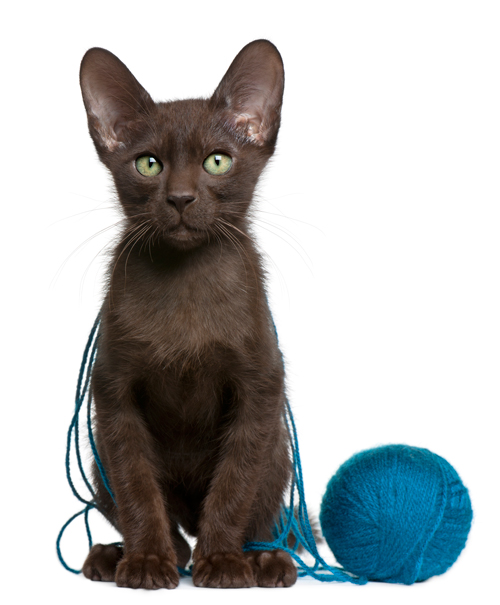
Breeders With Currently Available Kittens
All The Cat Breeds
- Abyssinian
- American Bobtail
- American Curl
- American Shorthair
- American Wirehair
- Balinese
- Bengal
- Birman
- Bombay
- British Shorthair
- Burmese
- Burmillia
- Charteux
- Chausie
- Colorpoint Shorthair
- Cornish Rex
- Devon Rex
- Donskoy
- Egyption Mau
- European Burmese
- Exotic
- Havana Brown
- Highlander
- Himalayan
- Japanese Bobtail
- Khao Manee
- Korat
- LaPerm
- Lykoi
- Maine Coon
- Manx
- Minuet / Napolean
- Munchkin
- Norwegian Forest Cat
- Ocicat
- Oriental Longhair
- Oriental Shorthair
- Persian
- Peterbald
- Pixie Bob
- Ragamuffin
- Ragdoll
- Russian Blue
- Savannah
- Scottish Fold
- Scottish Straight
- Selkirk Rex
- Seychellois
- Siamese
- Siberian
- Singapora
- Snowshoe
- Somali
- Sphynx
- Thai
- Tonkinese
- Toyger
- Turkish Angora
- Turkish Van

